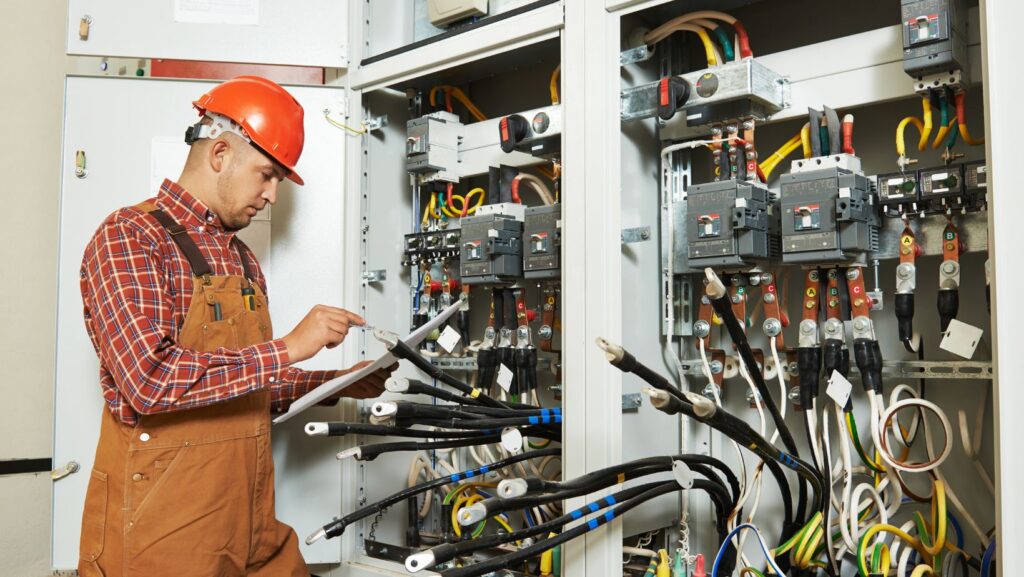In a modern business, the flow of data is like the central nervous system. Every department, from sales and customer service to operations and finance, relies on a constant, uninterrupted stream of information. When this system falters, the entire organization can grind to a halt. The physical foundation supporting this critical data flow is the network cabling. A disorganized, point-to-point cabling system can lead to slow speeds, frequent downtime, and troubleshooting nightmares. This is where a methodical approach, known as structured cabling, becomes essential for building a robust and future-proof network.
Structured cabling is a standardized, organized approach to a building’s or campus’s cabling infrastructure. Instead of running individual cables directly from point A to point B for each new device, it creates a comprehensive and hierarchical system of wiring and connectivity products. This system is designed to support a wide range of uses, including data, voice, video, and various management systems. By adhering to industry standards set by organizations like the Telecommunications Industry Association (TIA), a structured cabling system ensures consistency, reliability, and scalability. It is the backbone that supports everything from your office computers and VoIP phones to your security cameras and access control systems.
The Architectural Blueprint of a Modern Network
A structured cabling system is composed of several distinct subsystems, each with a specific purpose. Think of it as the architectural plan for your network’s physical layer. This organized approach simplifies management and allows for methodical growth. It prevents the “spaghetti” of tangled wires often found in server closets that grew organically without a plan.
The key components of this system include:
- Entrance Facilities: This is the point where the outside service provider’s network connects to the building’s internal network. It includes the cabling, connection hardware, and protection devices.
- Equipment Room: A centralized space that houses the main networking equipment, such as servers, routers, and switches.
- Backbone Cabling: These are the large-capacity cables that run between entrance facilities, equipment rooms, and telecommunications rooms. They form the primary information channel of the network.
- Telecommunications Room (or Enclosure): This room or space on each floor houses the termination points for horizontal cabling and connects them to the backbone cabling.
- Horizontal Cabling: This is the wiring that runs from the telecommunications room out to the individual workstations and devices on a floor.
- Work Area: The final component, which includes the outlets and connectors that link end-user devices to the horizontal cabling.
This modular design is the core reason for its superior performance. A problem with the horizontal cabling in one work area does not disrupt the entire network. Technicians can easily isolate issues, making troubleshooting significantly faster and more efficient. This organization is a foundational element for any business in a major metropolitan area, and companies seeking structured cabling Dallas providers are investing in this long-term stability.
Boosting Network Speed and Bandwidth
One of the most immediate benefits of a professionally installed structured cabling system is a significant improvement in network speed and bandwidth. The system is designed using high-quality cables, such as Category 6 (Cat6) or Category 6A (Cat6A), or fiber optics, which are selected based on current and future needs. These cables are engineered to support higher data transfer rates and reduce signal degradation.
Point-to-point, or unstructured, cabling often involves using whatever cable is on hand, mixing different categories, and exceeding recommended lengths. This ad-hoc approach introduces a host of problems. According to a study by the TIA, up to 70% of network downtime can be attributed to cabling issues. Signal interference, or crosstalk, is a common culprit in disorganized systems where data cables are bundled too tightly with power cables or other sources of electromagnetic interference (EMI).
Structured cabling standards dictate precise installation practices to mitigate these issues. They specify minimum bend radii for cables, separation distances from electrical sources, and proper termination techniques. By adhering to these guidelines, the system minimizes data packet loss and retransmissions, allowing the network to operate at its maximum potential speed. For businesses reliant on large file transfers, video conferencing, and cloud-based applications, this optimized performance is not just a convenience—it’s a competitive necessity.
Enhancing Reliability and Reducing Downtime
For any business, network downtime is costly. A 2022 report from ITIC found that for 91% of enterprises, a single hour of server downtime costs over $300,000. While not all downtime is this catastrophic, even minor interruptions can disrupt productivity and damage customer trust. A well-designed, structured cabling system is inherently more reliable than its unstructured counterpart.
The organized nature of the system makes it far less susceptible to human error. Moves, adds, and changes (MACs) are a part of daily business operations. With a structured system, adding a new user or moving a workstation is a simple matter of patching a new connection in the telecommunications room. There is no need to run a new, disruptive cable across the office ceiling. This simplicity drastically reduces the chance of accidentally unplugging a critical server or disrupting another user’s connection.
Furthermore, the quality of the components and the installation process contributes to long-term reliability. Professional installers who provide services for structured cabling dallas businesses will certify their work, testing every cable run to ensure it meets performance standards. This upfront investment in quality prevents a cascade of future problems, from intermittent connection drops to complete network failure. The result is a stable and predictable network environment that businesses can depend on.
Future-Proofing and Scalability
Technology evolves at a relentless pace. The network that is adequate today may be obsolete in five years. A major advantage of structured cabling is its inherent scalability and ability to adapt to future technologies. The backbone cabling, for instance, can be designed with excess capacity, such as installing high-bandwidth fiber optic cables, even if they are not fully utilized on day one. This foresight allows a company to easily upgrade its network equipment and adopt higher-speed technologies without the need to replace the core infrastructure.
This forward-thinking approach saves significant time and money. Rerunning cables through walls, ceilings, and conduits is a disruptive and expensive process. A structured system is built for growth. As your business expands and your data needs increase, the cabling foundation is already in place to support it. This might mean upgrading switches to support 10 Gigabit Ethernet or integrating new IoT devices into the network. With a structured system, these upgrades are manageable and cost-effective. Investing in a robust structured cabling dallas installation is an investment in the company’s long-term technological agility.
Streamlining Management and Administration
The complexity of managing an unstructured network grows exponentially with each new device. Tracing a faulty cable in a tangled mess can take hours, requiring significant IT resources and causing prolonged disruption. The labeling and documentation standards of a structured cabling system eliminate this guesswork. Every cable, port, and outlet is clearly labeled and corresponds to a master plan.

When a user reports a network issue, a technician can consult the documentation, identify the exact cable run, and quickly test the connection from the patch panel in the telecommunications room. This ability to centralize troubleshooting and administration is a game-changer for IT departments. It allows them to resolve issues faster, reduce user frustration, and dedicate more time to strategic initiatives rather than reactive maintenance. The clean, organized layout of equipment racks and patch panels not only looks professional but also improves airflow, which can extend the lifespan of expensive network hardware. This streamlined management is a key benefit for any organization looking to optimize its IT operations and is a major reason why Dallas-area businesses seek out professional structured cabling dallas services.
Final Analysis
The physical cabling of a network is a component that is too often overlooked until it becomes a source of problems. A structured cabling system transforms this potential liability into a strategic asset. By establishing an organized, standardized, and high-performance foundation, it directly improves network speed, reduces costly downtime, and simplifies day-to-day management. Its modular design provides the scalability to grow with a business and adapt to new technologies, ensuring the initial investment continues to pay dividends for years to come. Ultimately, moving from a chaotic, point-to-point wiring mess to a structured system is one of the most effective steps a business can take to build a truly reliable and high-performing network. It is the invisible but essential framework that supports every digital interaction and empowers a business to operate efficiently in a connected world.


